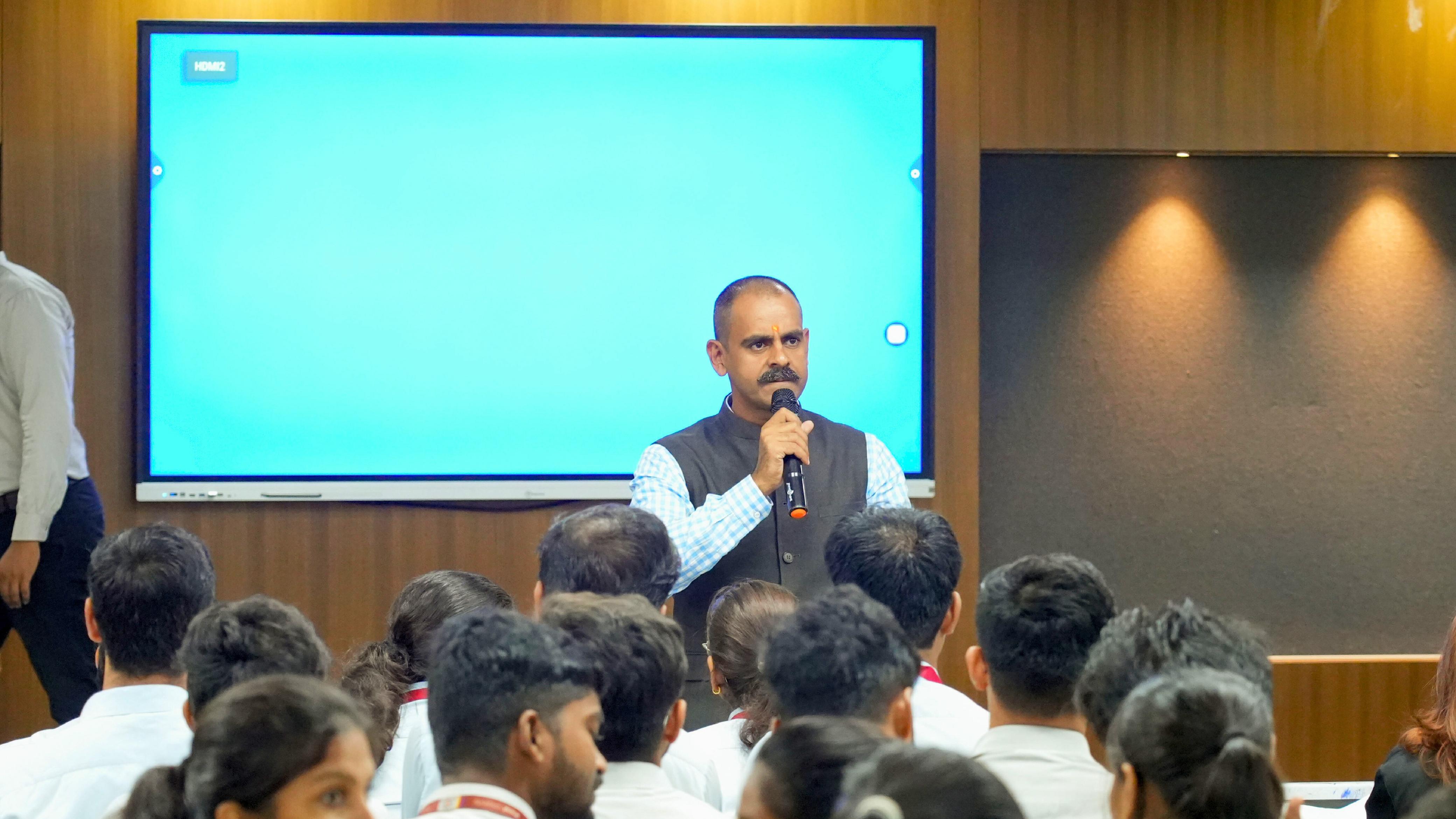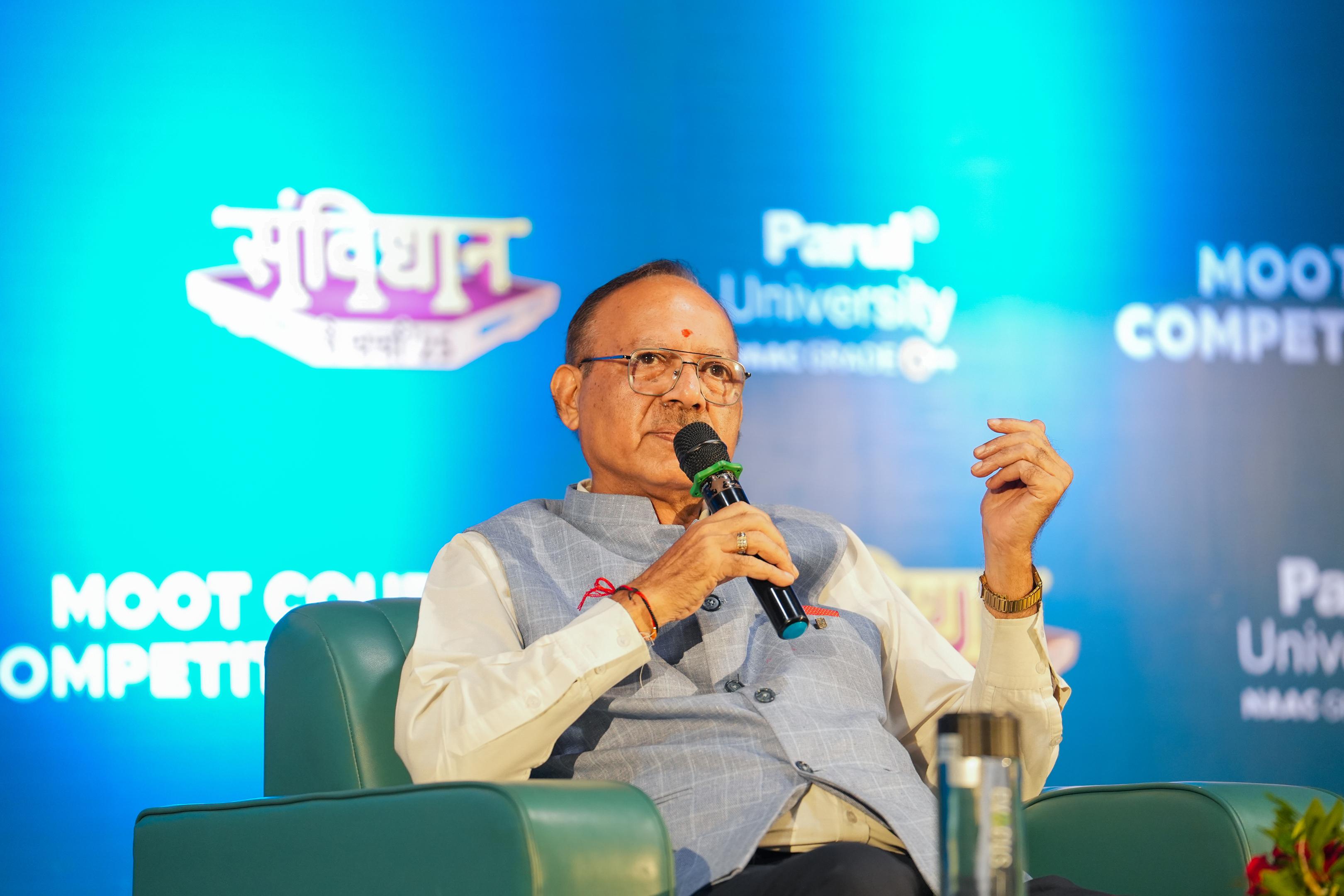An Architectural Walk with Parul University
Classrooms and drafting tables were left in the background--Goa itself was the classroom, and its walls talked, its altars glowed, and its staircases told centuries-old tales. One minute, you are lost in the bustle of Panaji, and the next, you are standing before the dazzling white facades, stepping up the steps that have evidently borne centuries of prayers. This was not a tour; it was entering a living textbook where design, history, and faith collide.
To architecture students, the churches and chapels of Goa are not merely monuments, but a lesson in stone and symmetry. Each curve, each bell tower, each fresco is a lesson in the combination of cultures, climates, and creativity. And honestly? We saw something too big to fit in sketchbooks.
Our Lady of the Immaculate Conception Church, Panaji.
This is one of the oldest churches in Goa, which started off as a mere chapel in 1541 and has since expanded to become the glittering white monument of Panaji as we know it today. Rising on a hill, it becomes animated with its well-known zigzag staircase of 78 steps. On the lower side the facade resembles almost like it is flowing down to the city.
The serenity is interrupted only by shining golden altars and a huge Augustinian bell, the second largest in Goa, inside. These plain white walls and bursts of gold are combined to make the entire place appear dramatic and peaceful simultaneously.
St. Sebastian Chapel, Fontainhas
The St. Sebastian Chapel is a small and quiet structure constructed in the 19th century in the center of the Latin Quarter of Panaji. It is not a building that draws your attention to its size like the great cathedrals, but rather to the way it blends into the colorful streets surrounding it. It is very quiet and calm, which makes it welcoming since it has white walls.
Within it lies a crucifix, which formerly hung in the palace of the Inquisition, with a great portion of history attached to it. Although it is small, the chapel demonstrates that buildings do not have to be big to be significant. The most powerful impression can be made by simplicity.
Basilica of Bom Jesus, Old Goa
One of the most popular landmarks in Goa is the Basilica of Bom Jesus, constructed in 1594-1605. Its dark stone walls appear plain and solid on the outside, but inside, it is a different world. The golden altars are shining, the marble floors and details are outstanding, and the entire space is full of life due to the history.
The silver casket of St. Francis Xavier is the most important feature of the Basilica, and it was prepared in Italy and exquisitely worked by Indian artisans. It also features the Baroque style in the building, which combines all the other classical styles to come up with a grand and eternal masterpiece.
Sé Cathedral, Old Goa
One of the largest churches in Asia is the Sé Cathedral, which is located in Old Goa and is 250 feet long and 181 feet wide. It is so big that as soon as you enter it you feel grand, almost as though you are on a giant stage where arches, light, and silence make a striking impact. The cathedral is also famous due to the Golden Bell, which has a deep and rich sound.
The central altar, which was dedicated to Saint Catherine, is bright with carvings and paintings. The smaller side chapels provide the calming effect, and the cathedral is as impressive as it is massive and full of intentional detail in every corner.
Church of St. Francis of Assisi, Old Goa
The 1661 Church of St. Francis of Assisi is full of contrasts. Externally, it is plainly designed in straightforward Tuscan lines that do not attempt to impress. However, once one is inside, everything becomes different; the room fills with Baroque style, golden altars, detailed floral carvings, and colorful murals that make the walls alive.
Close to the church is an old convent, which is now a museum harboring paintings, artifacts, and relics of the past of Goa. Entering it is like entering a living design gallery, where history, art, and architecture all converge in a single intriguing location.
Why This Tour Appeals to Architecture Students
-
Learning by material: These churches demonstrate how local laterite, basalt, and lime plaster were mixed with European styles. It is an ideal tutorial on how materials respond to design.
-
Shapes and lines: Wide staircases and towering spires, every turn of the building has its forms and lines to inspire sketchbooks and models.
-
History in layers: Each church has a story, from simple chapels to elaborate Baroque forms, a history of culture, authority, and religion.
Beyond Goa: More Classrooms Without Walls
The Goa walk was only one chapter. The same tours were opened in other cities, and every city transforms streets and spaces into learning processes. Mumbai had a Writer’s Tour, which followed the locations that influenced Indian literature. A Robotics Tour was organized in Chennai, and machines and ideas came to life. In Delhi, Mumbai, and Bangalore, leadership tours explored the vibrancy of business centers and startups. Hyderabad opened its labs in a Biopharma Tour, and Mumbai served as a playground to explore designs.
All of these tours had the same theme: educating outside of classrooms, into the real world, real places, real people, and real narratives. Since in some cases the best lessons were not in books, but in cities

.jpg)

.jpg)

.jpg)


